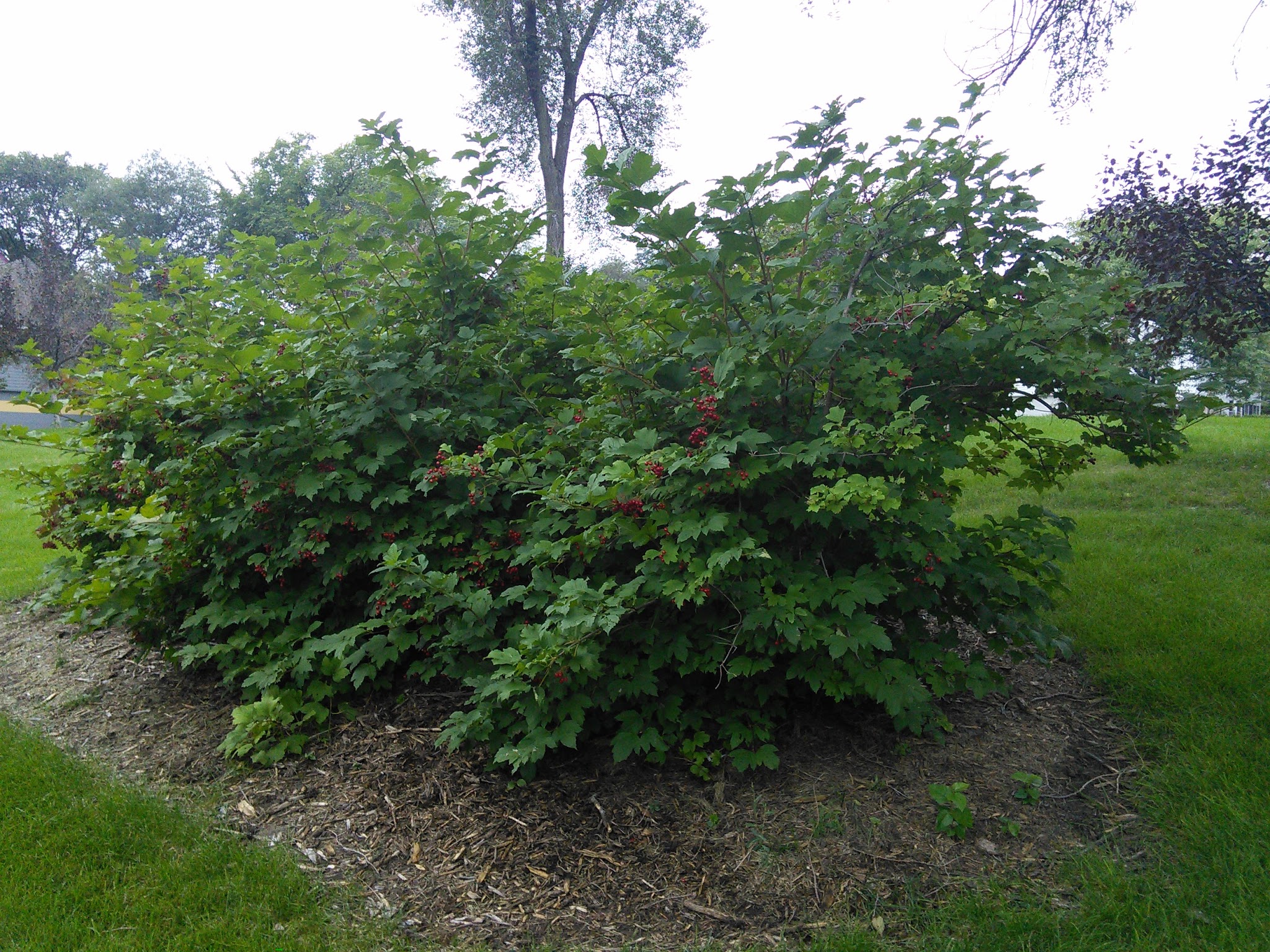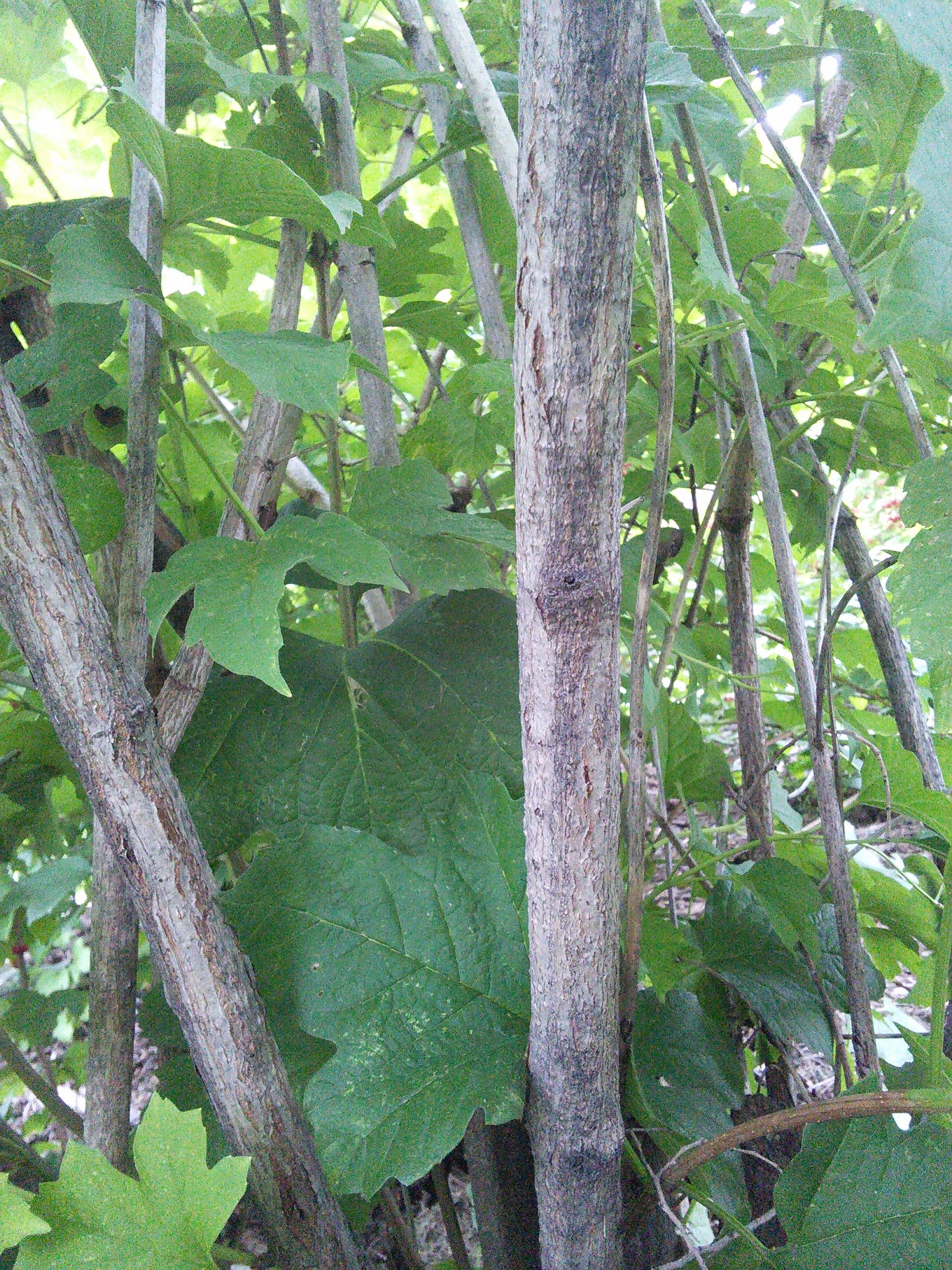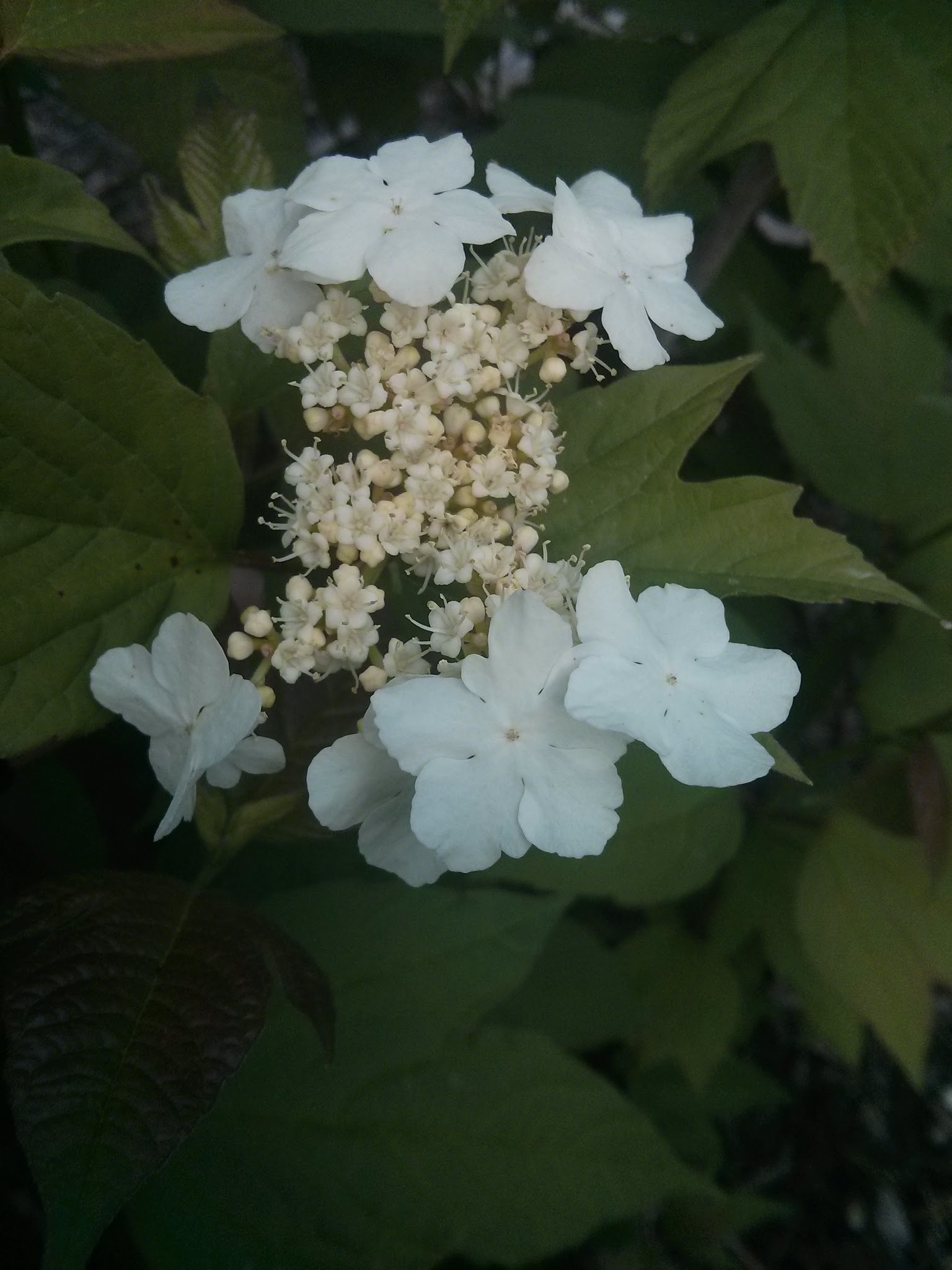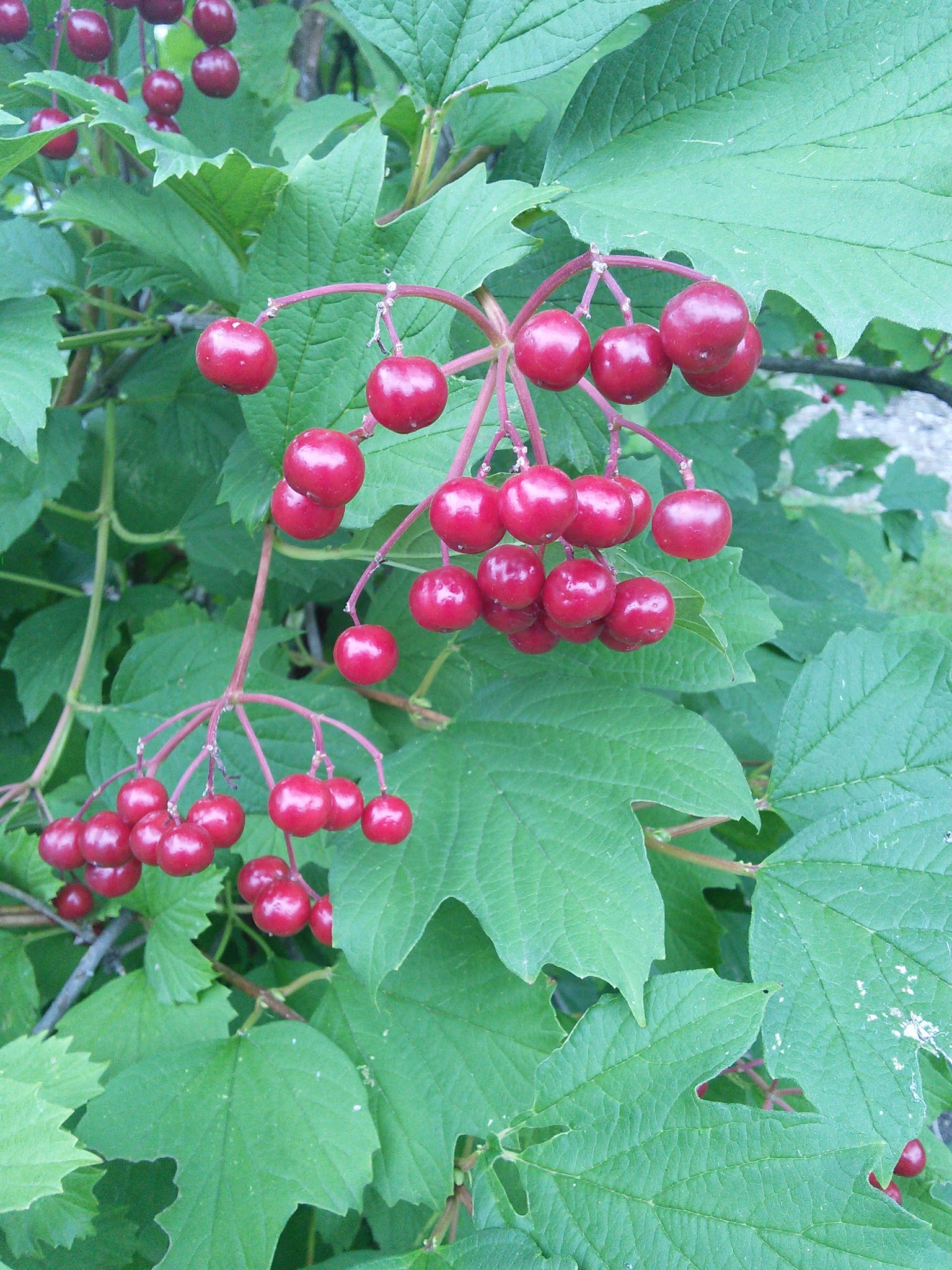Common Name: high-bush cranberry, American cranberry bush
Scientific Name:
Family: Adoxaceae
Genus: Viburnum
Species: opulus var. americanum
Hardiness Zone: 2 to 7
Height: 8 to 12 ft
Width: 8 to 12 ft
Common Characteristics:
High-bush cranberry is not a true cranberry, it is actually a member of the honeysuckle family. It is a multi-stemmed shrub that rounds out its shape with age. The bark on the stems is smooth and gray-brown with large lenticels. Irregular cracks appear in the bark as the shrub matures and ages. The leaves are in an opposite arrangement and have a maple-like shape. The leaves are three-lobed with irregular dentate margins. They are dark green in the summer and turn reddish-purple in the fall. A good characteristic to help with identification is to look at the base of the leaf where it meets with the petiole. There at the base of the leaf are two flat glands opposite of each other on the petiole. Large white flowers bloom in June. The large showy flowers are sterile and surround small, fertile lace-cap flowers. Bright red berry drupes develop in the fall. If there are still berries left on the shrub, they tend to shrivel after the first frost.
Where it Grows:
High-bush cranberry does best in well-drained, moist rich, loamy soils, but it does tolerate a wide range of soil types. It also tolerates occasional flooding, road salt, and wet sites. Plant in full sun to partial shade.
How it's Used:
High-bush cranberry can be used for shrub borders, foundations, woodland margins, and as a hedge or screen. The berries are not as bitter as other berries found on V. opulus so they are sometimes used for jams and jellies as a substitute for traditional cranberries.
Ecosystem Services:
The berries are a great food source for birds. Butterflies and other insect pollinators are attracted to the flowers.
Where it is Native to:
High-bush cranberry is native to swampy woods, bogs, lake margins, pastures, thickets, slopes, and moist low places from across Canada and in the Northeastern and Midwestern United States.
Known Varieties and Their Traits:
- Bailey Compact American Cranberry-bush viburnum (Viburnum opulus var. americanum ‘Bailey Compact’): Compact, dwarf rounded form; 5 to 6 feet high and wide; deep red fall color.
- Dwarf American Cranberry-bush viburnum (Viburnum opulus var. americanum ‘Compactum’): Compact cultivar growing 5 to 6 feet high and wide; white lace-cap flowers and red fruit; the fall color is yellow.
- Hahs American Cranberry-bush viburnum (Viburnum opulus var. americanum ‘Hahs’): Selected for better, larger fruit production; grows 6 to 8 feet high and wide; dark green foliage turns red in fall.
- Redwing® J.N. Select Cranberry-bush viburnum (Viburnum opulus var. americanum ‘J.N. Select’): Newly emerging leaves have a hint of red; white flowers appear mid-to-late spring; persistent bright red fruit, and consistently red fall color. Good flower and fruit production. A Chicagoland Grows™ introduction.
Problems:
Viburnum crown borer can cause stem dieback and viburnum leaf beetle can cause complete defoliation of the shrub. Highbush cranberry can survive from the defoliation and leaf out normal next season but can die from constant defoliation.
References:



